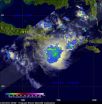(Press-News.org) A three-year study of ancient clam gardens in the Pacific Northwest has led researchers, including three from Simon Fraser University, to make a discovery that could benefit coastal communities' food production. PLOS ONE, a peer-reviewed science journal, has just published their study.
Amy Groesbeck, an SFU alumna, SFU professors Anne Salomon, an ecologist, and Dana Lepofsky, an archaeologist, and Kirsten Rowell, a University of Washington biologist are the authors.
The researchers discovered that ancient clam gardens made by Aboriginal people produced quadruple the number of butter clams and twice the number of littleneck clams as unmodified clam beaches. This is the first study to provide empirical evidence of ancient clam gardens' superior productivity.
In the past, as indigenous coastal communities from Alaska to Washington State grew in numbers, people needed to devise sustainable ways of feeding themselves. One of the ways they did this was by cultivating clams in human-made, rock-walled beach terraces known as clam gardens.
When the researchers transplanted more than 800 baby clams into six ancient clam gardens and five non-walled natural beaches to compare their growth rates they made a groundbreaking discovery.
The clams in the ancient gardens grew almost twice as fast and were more likely to survive than baby clams transplanted into unmodified beaches in the same area.
"We discovered that flattening the slope of ancient beach clam gardens expanded the real-estate for clams at the intertidal height at which they grow and survive best," explains Salomon. The School of Resource and Environmental Management assistant professor adds: "Traditional knowledge by coastal First Nations members further revealed that their ancestors boosted these gardens' productivity by adding ground clam shell and pebbles to them."
The researchers began their clam garden investigations in 2008. From 2009 to 2011 they focused their efforts on Quadra Island due to the sheer number of clam gardens available to survey and use as experimental replicates. They surveyed 11 ancient clam gardens and 10 un-walled clam beaches and compared their number, size and weight of clams. They collaborated with indigenous knowledge holders from the Tla'amin First Nation and Laich-kwil-tach Treaty Society.
This study was the basis of Groesbeck's master's research, which was conducted under the supervision of the study's other authors. Groesbeck, a 2013 Faculty of Environment graduate and this study's lead author, is now a University of Washington research assistant.
"Our discovery provides practical insights into sustainable ancient marine management techniques that can inform local food security strategies today," says Groesbeck.
This study notes that some of today's benthic shellfish aquaculture practices have been shown to undermine near shore ecosystem resilience. They "alter the community composition of near shore systems, change sediment characteristics, and facilitate the introduction of invasive species," says the study.
Lepofsky says, "On the Northwest Coast we are fortunate to have both the tangible record of clam gardens and the culture-based knowledge of local indigenous people to educate us. The lessons learned here have global implications for food security and about the way indigenous people interact with their land and seascapes."
INFORMATION:
Backgrounder: Quotes and more facts
Kirsten Rowell, University of Washington collaborator
"We paired ecological experiments with surveys of archaeological aquaculture features. Our results provide evidence that intertidal modifications to beach slope were nutritionally lucrative. For the clams under study, we found that there is a real growth benefit, higher densities and better survivorship, which could translate into a significant difference in local food security."
Rowell, who specializes in tracking the chemical signature left behind in the hard parts of aquatic animals, was instrumental in helping Lepofsky analyse prehistoric clams in shell remnants. Rowell used chemical recordings like a flight recorder to reconstruct how quickly clams in ancient gardens grew and when they reproduced.
Dana Lepofsky, SFU archaeologist
"One of the reasons this study is so compelling is that it combines First Nations knowledge with the tools of archaeology and ecology. While archaeologists often work with First Nations, it is somewhat rare in ecology. The combination of these three sources of knowledge is very powerful."
Led by Lepofsky, an archaeological team is now comparing the growth rate of clams prior to and during when ancient clam garden technology was prevalent. They have expanded their research in B.C. to the province's central coast and elsewhere via the Clam Garden Network, a newly formed group involving Aboriginal people and Parks Canada researchers.
Simon Fraser University is consistently ranked among Canada's top comprehensive universities and is one of the top 50 universities in the world under 50 years old. With campuses in Vancouver, Burnaby and Surrey, B.C., SFU engages actively with the community in its research and teaching, delivers almost 150 programs to more than 30,000 students, and has more than 125,000 alumni in 130 countries.
Simon Fraser University: Engaging Students. Engaging Research. Engaging Communities.
Contact:
Anne Salomon (Vancouver resident), 778.782.8739, anne.salomon@sfu.ca
Dana Lepofsky (Vancouver resident), 778.782.5403, dlepofsk@sfu.ca
Amy Groesbeck (Seattle resident), 360.441.5492, amysue72@gmail.com
Kirsten Rowell (Switzerland resident), +41.079.851.9461, rowellk@uw.edu
Carol Thorbes, PAMR, 778.782.3035, cthorbes@sfu.ca
Photos:
http://at.sfu.ca/ekyhwN
Videos:
Clam Garden:
http://at.sfu.ca/MYJAQQ
Time laps:
http://at.sfu.ca/jUpPbU
Ancient clam gardens nurture food security
2014-03-20
ELSE PRESS RELEASES FROM THIS DATE:
Genome-wide association studies mislead on cardiac arrhythmia risk gene
2014-03-20
Although genome-wide association studies have linked DNA variants in the gene SCN10A with increased risk for cardiac arrhythmia, efforts to determine the gene's direct influence on the heart's electrical activity have been unproductive. Now, scientists from the University of Chicago have discovered that these SCN10A variants regulate the function of a different gene, SCN5A, which appears to be the primary gene responsible for cardiac arrhythmia risk. The SCN10A gene itself plays only a minimal role in the heart, according to the study, published in the Journal of Clinical ...
Oregon physicists use geometry to understand 'jamming' process
2014-03-20
EUGENE, Ore. -- (March 20, 2014) -- University of Oregon physicists using a supercomputer and mathematically rich formulas have captured fundamental insights about what happens when objects moving freely jam to a standstill.
Their approach captures jamming -- the point at which objects come together too tightly to move -- by identifying geometric signatures. The payoff, while likely far down the road, could be a roadmap to preventing overfilled conveyor belts from stopping in factories, separating oil deposits trapped in sand, or allowing for the rapid, efficient transfer ...
Mayo Clinic researchers find genetic clue to irritable bowel syndrome
2014-03-20
ROCHESTER, Minn. — March 20, 2014 — Is irritable bowel syndrome (IBS) caused by genetics, diet, past trauma, anxiety? All are thought to play a role, but now, for the first time, researchers have reported a defined genetic defect that causes a subset of IBS. The research was published in the journal Gastroenterology.
Researchers estimate that approximately 15 to 20 percent of the Western world has IBS. It is a common disorder that affects the large intestine. Most patients with the disorder commonly experience symptoms of cramping, abdominal pain, bloating gas, diarrhea ...
Health insurance coverage increased ER use in Massachusetts
2014-03-20
WASHINGTON — The implementation of health care reform in Massachusetts – principally the expansion of health insurance coverage to nearly everyone in the state – was associated with a small but consistent increase in emergency department use, according to the findings of a study to be published online today in Annals of Emergency Medicine ("Increased Use of the Emergency Department After Health Care Reform in Massachusetts").
"This obviously has implications about what we can expect to see nationally as the roll-out of the Affordable Care Act continues," said Peter ...
Big government -- or good neighbors -- can improve people's health
2014-03-20
Lincoln, Neb., March 20, 2014 – The nation's left-leaning citizens might be pleased by the findings of a new University of Nebraska study that finds those who live in liberal states tend to be healthier.
But conservatives could also take satisfaction in the same study's conclusion that strong communities also foster better health.
"Some people might like the argument that liberal government automatically leads to healthier people, because it supports their worldview," said Mitchel Herian, a faculty fellow with the university's Public Policy Center and lead researcher ...
Plankton make scents for seabirds and a cooler planet
2014-03-20
The top predators of the Southern Ocean, far-ranging seabirds, are tied both to the health of the ocean ecosystem and to global climate regulation through a mutual relationship with phytoplankton, according to newly published work from the University of California, Davis.
When phytoplankton are eaten by grazing crustaceans called krill, they release a chemical signal that calls in krill-eating birds. At the same time, this chemical signal — dimethyl sulfide, or DMS — forms sulfur compounds in the atmosphere that promote cloud formation and help cool the planet. Seabirds ...
Wind farms can provide society a surplus of reliable clean energy, Stanford study finds
2014-03-20
The worldwide demand for solar and wind power continues to skyrocket. Since 2009, global solar photovoltaic installations have increased about 40 percent a year on average, and the installed capacity of wind turbines has doubled.
The dramatic growth of the wind and solar industries has led utilities to begin testing large-scale technologies capable of storing surplus clean electricity and delivering it on demand when sunlight and wind are in short supply.
Now a team of Stanford researchers has looked at the "energetic cost" of manufacturing batteries and other storage ...
Satellite confirms Tropical Cyclone Mike's quick disappearing act
2014-03-20
Tropical Cyclone Mike didn't even last a day in the Southern Pacific Ocean as NOAA's GOES-West satellite revealed the storm dissipating just 24 hours after it was born.
The Joint Typhoon Warning Center's second update on Tropical Cyclone Mike was its last. At 2100 UTC/5 p.m. EDT Mike was located near 24.3 south latitude and 157.9 west, about 618 nautical miles/711.1 miles/ 1,145 km southwest of Papeete, Tahiti. Maximum sustained winds were near 35 knots/40 mph/62 kph at that time.
All warnings for the Southern Cook Islands were cancelled and Mike was quickly weakening ...
Face it: Instagram pictures with faces are more popular
2014-03-20
Like them or not, there's more proof that selfies aren't going away any time soon. Georgia Institute of Technology and Yahoo Labs researchers looked at 1.1 million photos on Instagram and found that pictures with human faces are 38 percent more likely to receive likes than photos with no faces. They're also 32 percent more likely to attract comments. The study is one of the first to examine how photos with faces drive engagement on large-scale, image-sharing communities.
The researchers also found that the number of faces in the photo, their age or gender didn't make ...
NASA sees ex-Tropical Cyclone Gillian's remnants persist
2014-03-20
NASA's TRMM satellite continues to follow the remnants of former Tropical Cyclone Gillian as it moved from the Southern Pacific Ocean into the Southern Indian Ocean where it appears to be re-organizing.
The persistent remnants of tropical cyclone Gillian have moved westward over 2,700 km/1,674 miles since forming in the Gulf of Carpentaria on March 8, 2014.
Gillian's coherent remnants were located just to the southeast of the Indonesian island of Java when the Tropical Rainfall Measuring Mission or TRMM satellite flew overhead on March 20, 2014 at 0415 UTC/12:15 a.m. ...






